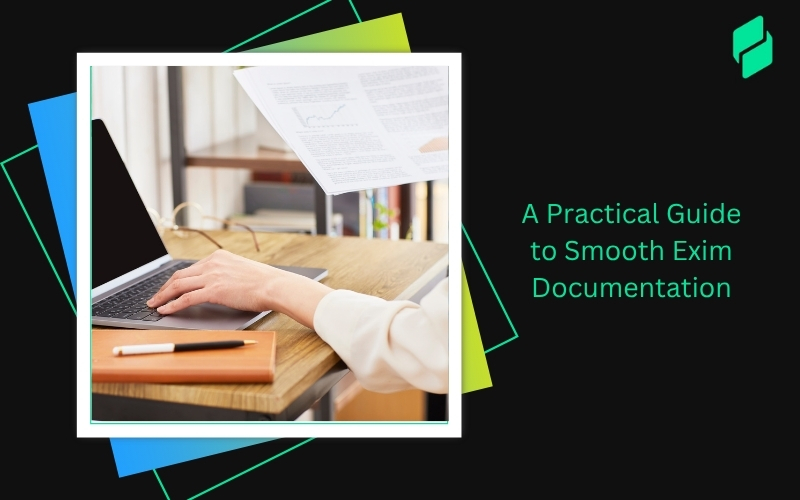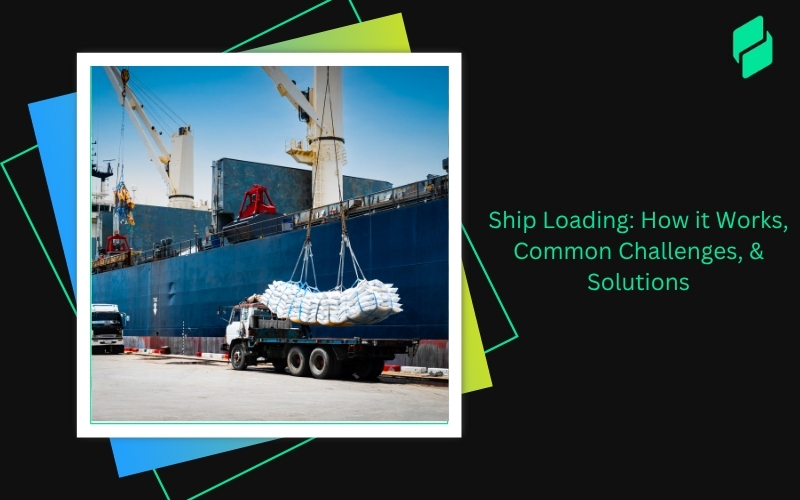Optimize your business: use unlimited savings with Pazago fulfilled now!
Get Started ->Did you know poor logistics can cost businesses up to 10% of their annual revenue? It's a big hit that goes beyond finances. It can damage your brand's reputation and weaken customer trust. That's why mastering logistics is crucial.
Integrated logistics is the solution. It's not just about moving goods. It's about creating a smooth, efficient flow that keeps your business competitive. In this article, we'll explore how to make it work for you.
Let's get started!
What is Integrated Logistics?

Integrated Logistics refers to the coordination of all logistics functions, including transportation, warehousing, inventory management, and customs, into a single streamlined process. By consolidating tasks under one provider, it simplifies operations, improves efficiency, reduces costs, and accelerates the flow of goods from origin to destination.
For importers and exporters, it combines transport modes, warehousing, and customs, making the supply chain faster, more cost-effective, and error-free.
Key Components of Integrated Logistics
At the heart of integrated logistics is the seamless coordination of transportation, warehousing, inventory, and order processing, ensuring goods move efficiently and reach customers on time.
- Transportation Management
Optimizes routes, transport modes, and costs for better coordination and efficiency. - Warehousing and Distribution
Streamlines storage and order fulfilment, reducing handling costs and speeding up deliveries. - Inventory Management
Tracks stock levels and replenishes in real-time, minimizing errors and stock issues. - Order Processing
Ensures seamless order fulfilment, coordinating warehousing, inventory, and transport for faster, accurate delivery.
Having outlined the critical elements of integrated logistics, we can now examine why these components are so important for importers and exporters.
Why Integrated Logistics Matters for Importers and Exporters
Integrated logistics simplifies operations and drives efficiency. Here's how:
- Faster Deliveries: Combines transportation, warehousing, and customs into one seamless system to eliminate delays and speed up shipments.
- Lower Costs: Consolidated shipments, optimized routes, and efficient warehousing reduce overall logistics expenses.
- Minimized Risks: Prevents customs issues and shipment damage by centralizing operations and ensuring compliance.
- Real-Time Tracking: Live updates on shipments help businesses adjust plans and improve decision-making.
- Flexible Operations: Quickly adapts to demand spikes or delays, keeping the supply chain responsive and reliable.
Now, let's take a closer look at the steps to successfully implement integrated logistics and make it work for your business.
Also Read: How To Select The Right Product To Export From India?
Steps Involved in Implementing Integrated Logistics

Implementing integrated logistics is a strategic process that involves several key steps. Below is a detailed breakdown of how to integrate your logistics operations:
- Define Core Logistics Functions
The first step is to identify the internal logistics functions that drive the supply chain. These typically include procurement, inventory management, storage, distribution, and delivery. Establishing a clear understanding of these functions is crucial for ensuring that logistics operations are efficient and well-coordinated.
Key Considerations:
- Alignment with Business Goals: Ensure that logistics functions support your company's strategic objectives.
- Flexibility: The logistics functions should be adaptable to changing market conditions and customer needs.
- Data Visibility: Set up a system to track and measure performance across these functions.
- Select 3PL Provider
The next step is to select a third-party logistics (3PL) provider. The right 3PL partner will help manage key logistics functions such as transportation, warehousing, and customs, allowing you to focus on your core business operations.
Key Considerations:
- Reputation & Experience: Choose a provider with a proven track record in your industry.
- Technology Integration: Ensure the 3PL provider uses modern, scalable technology to integrate with your systems.
- Customer Service: Assess the provider's ability to handle customer issues and provide timely responses.
- Optimize Logistics Network & Establish Workflow
Once the 3PL provider is chosen, it's time to optimize your logistics network and establish a detailed workflow. This involves mapping out the complete supply chain and identifying key dependencies between procurement, inventory, storage, and distribution. Additionally, integrating technology like Warehouse Management Systems (WMS) and Transportation Management Systems (TMS) during this phase can streamline processes, reduce manual tasks, and ensure real-time tracking.
Key Considerations:
- Routing Efficiency: Optimize routes and delivery schedules for cost savings and faster service.
- Technology Compatibility: Ensure all systems (WMS, TMS) are compatible and integrate smoothly with your existing ERP systems.
- Capacity Planning: Make sure the network is designed to handle peak demand periods without excessive costs.
- Ensure Compliance with International Logistics Requirements
Compliance with international laws, regulations, and standards should be built into the logistics workflow from the outset. This includes customs regulations, transportation laws, and documentation requirements. Early integration of compliance ensures smooth operations across borders, reducing the risk of delays and fines.
Key Considerations:
- Customs Knowledge: Partner with a logistics provider who understands the nuances of global customs regulations.
- Regulatory Changes: Stay updated on changes in regulations that may affect your logistics processes.
- Documentation Automation: Implement digital solutions to ensure compliance paperwork is submitted correctly and on time.
- Test, Iterate, and Optimize Processes
Before full-scale implementation, pilot tests should be conducted to assess the effectiveness of new processes and workflows. This phase allows you to identify potential issues, gather feedback, and make necessary adjustments. Iterating based on these results will refine the processes and ensure they meet operational objectives.
Key Considerations:
- Test with Realistic Scenarios: Ensure the tests reflect actual operational conditions, including potential disruptions.
- Stakeholder Involvement: Involve relevant stakeholders in testing to ensure their feedback is incorporated.
- Performance Benchmarks: Establish clear metrics for performance during the testing phase.
- Identify Obstacles, Bottlenecks, and Risks
After testing and optimization, focus on identifying potential obstacles, bottlenecks, and risks that could disrupt the logistics flow. Whether it's delays in shipments, inefficient inventory management, or issues with communication, recognizing these challenges enables proactive problem-solving.
Key Considerations:
- Supply Chain Visibility: Ensure end-to-end visibility of the supply chain to spot risks before they escalate.
- Scenario Planning: Create contingency plans for potential disruptions (e.g., strikes, natural disasters).
- Data-Driven Decision Making: Use analytics to identify and mitigate risks before they impact operations.
- Implement Data Analytics for Continuous Monitoring
Real-time data analytics is essential for monitoring logistics performance and securing the smooth operation of the supply chain. Implementing advanced analytics tools allows for continuous monitoring of key metrics such as delivery times, order accuracy, and inventory levels, enabling timely interventions when necessary.
Key Considerations:
- Key Performance Indicators (KPIs): Define clear KPIs to track progress and identify areas for improvement.
- Predictive Analytics: Use analytics to forecast demand and optimize inventory levels, reducing stockouts and overstocking.
- Real-Time Data: Ensure real-time data access to enable quicker decision-making.
- Foster Collaboration Across Stakeholders
Transparent communication and strong collaboration between internal teams, the 3PL provider, suppliers, and customers are crucial for the logistics system's success. Using collaborative tools and systems ensures alignment among all stakeholders and streamlines information flow, preventing delays and miscommunication.
Key Considerations:
- Communication Platforms: Utilize tools like shared dashboards or collaborative software to keep all stakeholders updated in real-time.
- Cross-Department Coordination: Ensure internal teams communicate effectively to resolve issues quickly.
- Supplier Relationships: Foster strong relationships with key suppliers to ensure smooth material flow and reduce the likelihood of delays.
- Continuous Improvement and Innovation
Finally, continuous improvement should be embedded in the logistics operation. Regular reviews, audits, and feedback loops should assess performance and identify areas for innovation. Using emerging technologies such as automation, robotics, and AI can further optimize logistics operations and keep the system adaptable to changing market demands.
Key Considerations:
- Feedback Mechanisms: Establish regular feedback loops with stakeholders to refine processes.
- Emerging Technologies: To maintain a competitive edge, stay updated on new technologies (e.g., drones, autonomous vehicles, and AI-driven analytics).
- Scalability: Ensure that improvements can scale with your business growth.
By following these steps, you'll be able to effectively set up and manage integrated logistics. This strategic approach not only enhances operational efficiency but also provides a competitive edge.
Once the steps are in place, technology becomes essential for improving the efficiency of integrated logistics.
Also Read: Understanding and Reducing Logistics Costs: Types and Measurement Methods
Challenges in Implementing Integrated Logistics

While integrated logistics offers significant advantages, implementing it comes with its own set of challenges. Importers and exporters must be prepared to address these hurdles to realize the full benefits of an integrated system.
- Complex Stakeholder Coordination
Managing transportation providers, customs brokers, warehouses, and IT systems requires precise planning and communication. Misalignment can lead to delays, missed shipments, or documentation errors.
- Limited Supply Chain Visibility
Gaps in tracking or communication can cause bottlenecks and inflate costs. Ensuring end-to-end visibility is critical for smooth operations.
- Customs and Regulatory Hurdles
Navigating diverse regulatory requirements can cause delays and compliance risks, especially in international trade.
- Technology Integration
Aligning new logistics systems with existing processes and IT infrastructure demands careful execution to avoid disruptions.
- Cost and Resource Allocation
Setting up an integrated system involves upfront investment and resource reallocation, which can strain budgets if not managed effectively.
Addressing these hurdles requires innovative solutions, and platforms like Pazago are designed to meet those needs with efficiency.
Pazago: Seamless Integrated Logistics Solutions

With over 20 years of experience in ocean transport, Pazago offers comprehensive end-to-end logistics services, including ocean shipping, inland transportation, and customs clearance. Whether shipping dry cargo, refrigerated goods, or hazardous materials, Pazago tailors solutions to meet business needs.
Here's how Pazago incorporates technology to optimize logistics and improve efficiency:
- Advanced Supply Chain Management: Real-time tracking and predictive analytics enhance efficiency, reduce delays, and improve decision-making, ensuring smooth operations from start to finish.
- Automated Documentation & Document Management: Streamline paperwork with automated document generation and ensure compliance with international regulations. Easily create, organize, and access all export documents in one secure place, eliminating the need for endless folders or misplaced files.
- Shipment Tracking: Track shipments in real-time, 24/7, keeping you ahead of delays and ensuring clients are always informed, thus maintaining a smoother export process.
- Smart Routing and Optimization: Identify the most cost-effective and time-efficient shipping routes, reducing transit times and fuel consumption for greater sustainability.
- Communication Tools: Centralize all conversations with team members, suppliers, and logistics partners to ensure seamless collaboration, improve coordination, and reduce misunderstandings.
- Quality Inspections: Arrange thorough quality inspections directly on the platform and receive detailed reports, all integrated into your workflow, ensuring high standards and compliance.
- Logistics & Insurance: Plan, book, and manage logistics and insurance seamlessly on one platform, saving time and reducing coordination complexity.
- Integrated Finance: Simplify FX risk management and payments with quick access to debt and equity financing, improving financial control and visibility throughout the logistics process.
Pazago ensures a seamless, efficient global trade experience, keeping businesses connected and competitive in an increasingly complex marketplace.
Conclusion
Integrated logistics isn’t just about moving goods—it’s about creating a well-oiled machine that powers your entire business. By uniting every link in the supply chain, from transportation to inventory management, it enables faster deliveries, lower costs, and a more resilient operation. The journey to implementing this system may seem complex, but the payoff is a supply chain that adapts to challenges and consistently delivers value.
Ready to streamline your logistics and boost efficiency? Partner with Pazago for tailored solutions and seamless operations. Visit us now and take the first step toward smarter logistics!


.png)








